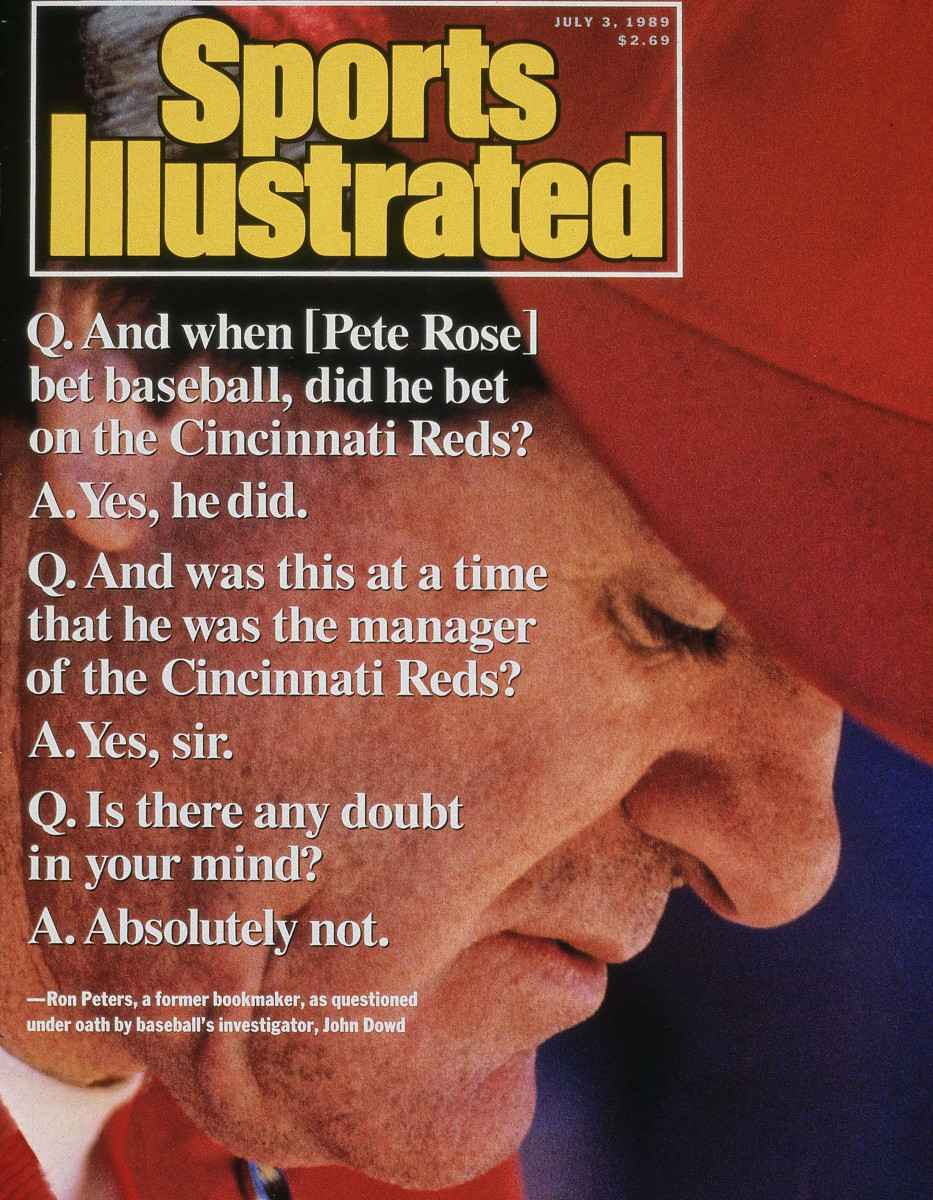Inside the SI Investigation that Exposed Pete Rose's Gambling
On August 24th, 1989, Major League Baseball banned Pete Rose after an investigation concluded the former Cincinnati Reds manager bet on baseball. Sports Illustrated is opening up the SI Vault and examining its most consequential work about moments like this one that defined the most legendary athletes in sports through its new podcast, The Record.
In the third episode, Priya Desai talks to former SI senior writer Craig Neff, who was part of a team of reporters that uncovered one of the biggest scandals in the history of sports. It all began in the spring of 1984, with a call to the tip line of Sports Illustrated. Jon Wertheim discusses Rose’s career and the time he spent the day with a young reporter named Al Michaels.
Listen—or subscribe—to SI's The Record:
The following transcript has been lightly edited for clarity and length.
Priya Desai: Do you remember who the first big break was as far as your main sources?
Craig Neff: The very first piece that we wrote, a guy named Alan Statman—who was the lawyer for Ron Peters who ran a cafe and was supposedly Pete's main bookie—his lawyer wanted to sell us his account of what happened, and we don't pay for journalism. That's not what we do. So we turned him down, but he had said to us that he had spoken to Major League Baseball and made them aware that he had information about Pete betting on baseball. And so that gave us the entree to approach baseball about what it knew and what it was doing, and we were simultaneously investigating every aspect of who Ron Peters was and other associates of Pete's. So what ended up happening is that we were supposed to do our very first piece in mid march of 1989 and at this point, there was nothing in the public about Pete Rose and gambling.
This was totally out of the the blue. Of course, had to talk to Major League Baseball about it, to get a response, as to what it was doing on having supposedly received this information. We closed the magazine on Sunday and Monday in those days, and by my recollection on Monday, Major League Baseball suddenly announced that it was investigating Pete Rose for baseball. They knew that we were doing a story. Then they scooped our story by announcing it publicly. So we had to kind of retool quickly.

PD: How many moving parts were there? Can you talk about how you went from the initial tip, to the investigation and then trying to figure out how quickly you can go into print.
CN: Initially we didn't know how many arms would be reaching into this, but before long, we realized that besides Pete Rose's confidant, his sort of inner circle of friends and associates, there were federal investigations involving either him or those associates, and it had the IRS, it had the customs department. It had federal drug authorities. There's also a baseball investigation that started fairly early on with John Dowd. So there was a parallel track that baseball was now investigating it. We had the locations, a Gold's gym that was near Cincinnati, a restaurant that was North of Cincinnati, that was called Jonathan's cafe, and then there were the circle of people. So there was Pete, and then people very close to him who had indicated they might have some involvement in or knowledge of his gambling. Then there were people close to those people. Because we had to, it's not only a matter of finding the sources in this kind of story, you have to find out that the sources are credible, and so you have to double check stories and you have to find other people who might have witnessed something.
We always tried to get multiple confirmations on everything because that's sound journalistic practice. So, throughout it, I talk about the complexity of the story. There were a number of people on our team. There were a lot of people we had to find and talk to and to piece all of their accounts together.
PD: So it’s all hands on deck at this point?
CN: Yes. It was a very much a team effort throughout and, a lot of reporters were involved at different points, but the two most significant ones, one was Jill Lieber, who was a staff writer at the time, and she was a tremendous reporter and in-person interviewer, able to draw information out of people as well as being super smart and actually, I mean a pioneer of sorts in women's journalism, in sports. I will say the other was Marty Dardis, who was almost 70 at the time, was not a journalist per se. He was an investigator and he was legendary really. He had made his name in Florida when he had connected the Watergate break in to president Nixon's reelection committee because he had taken the time to trace serial numbers on hundred dollar bills that were in the Watergate burglars possession. He was a former cop and a real, you know, hard-nose investigator who would help us on projects. He wasn't a staff writer or anything. So those two spearheaded our field reporting on the case. And there were some others who worked on little parts of it cause there were so many parts and pieces to this story.
